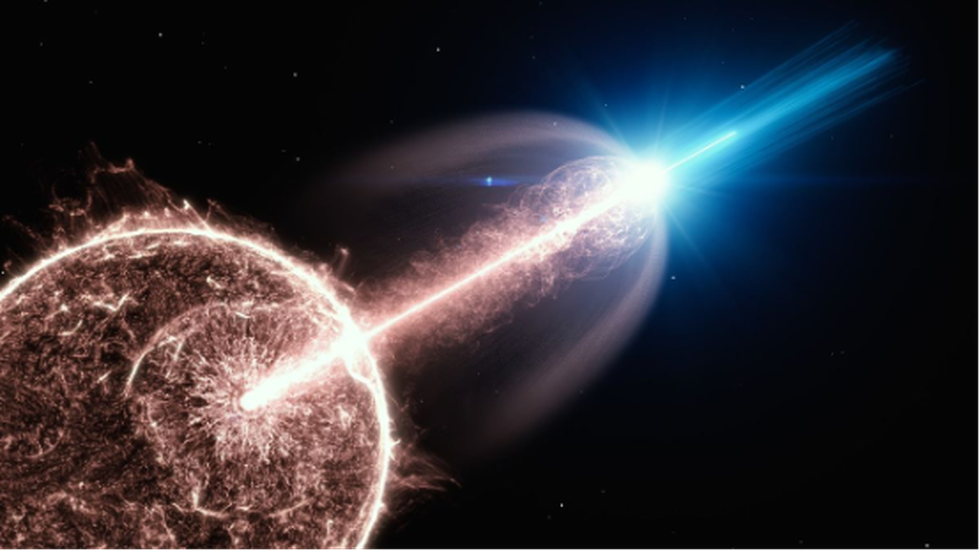About Gamma Ray Burst (GRB):
- GRBs are short-lived bursts of gamma-ray light, the most energetic form of light.
- GRB emits more energy in a few seconds than our Sun will emit in its lifetime and has two distinct emission phases:
- The short-lived prompt emission (the initial burst phase that emits gamma-rays), followed by a long-lived multi-wavelength afterglow phase.
- The shortest GRBs likely mark the collision of two compact stellar remnants called neutron stars, and the longest bursts are thought to arise when a massive, rapidly spinning star collapses to form a black hole.
- When a GRB erupts, it is briefly the brightest source of cosmic gamma-ray photons in the observable Universe.
What are Gamma Rays?
- Gamma rays have the smallest wavelengths and the most energy of any wave in the electromagnetic spectrum.
- They are produced by the hottest and most energetic objects in the universe, such as neutron stars and pulsars, supernova explosions, and regions around black holes.
- On Earth, gamma waves are generated by nuclear explosions, lightning, and the less dramatic activity of radioactive decay.
